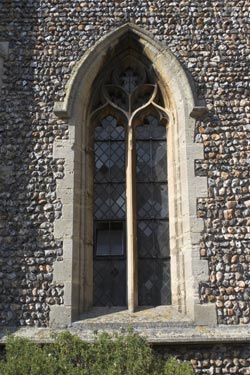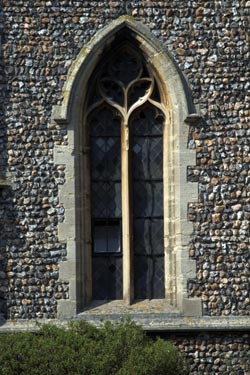Sigma 28-300mm f/3.5-6.3 DG Macro
This lens from Japanese manufacturer Sigma is their answer to a ‘do everything’ lens. With a zoom ratio of nearly 11x it covers everything from wide angle on a full frame sensor to long telephoto on a cropped sensor. We take a look at how it performs.
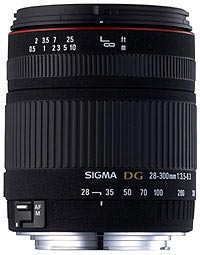 Specification
Specification
- Focal length 28-300mm
- Construction 15/13 elements/groups
- Max aperture f/3.5-6.3
- Min aperture f/22
- Angle of view 75.4-8.2°
- Min focus dist 0.5m
- Repro Ratio 1:3
- Filter 62mm
- Dimensions 74x86mm
- Weight 0.49kg
- Price (SRP) £229.99p
Build and handling
This lens is surprisingly compact for it’s capabilities although it does extend somewhat as you zoom to the long end of the range. The extension, achieved by a double trombone, comes out some 78mm, more than doubling the length of the lens. It does so with quite a smooth action though and the second sleeve of the trombone carries markings to indicate the amount of magnification the optic is achieving. The zoom ring covers some two-thirds of the barrel with the manual focus ring occupying the remainder.
Autofocus, in this more budget placed lens, lacks the refinement of a sonic motor and although the motor can be heard, the noise is not obtrusive and the action is quite quick. This is probably achieved by the short amount of travel required, as when you switch to manual focus there is less than a quarter of a turn needed on the nicely torqued manual ring.
The zoom ring is marked at 28, 35, 50,70, 100, 200 and 300mm and neither zooming nor focussing rotates the front element, a bonus for filter users. At the business end there is a bayonet mount for the supplied petal shaped hood and this has a positive click to keep it in place.
Optical quality
Considering the compromises that have to be made in a lens that has a near 11x zoom ratio, this lens does fairly well for itself in many areas. For instance distortion, although just visible at the short end, is kept down to –2.27% barrel where a threshold of +/- 1.5% is where it becomes visible to the eye. Yes, it’s there, but only mildly at the very widest setting. By the time you get to the other end of the zoom it has dropped to an acceptable 0.89% pincushion and can’t be seen with the eye.
At the wide end of the lens the performance for a lens of this nature can’t be faulted. Resolution is good and chromatic aberration is well controlled across the frame. As with nearly all zoom lenses, things drop off towards the longer end of the range, and this lens has a big range. Surprisingly though, there is no cliff that this one jumps off and the drop-off is fairly gradual, terminating in performance that will keep many photographers happy.
The one area that does show a few signs of deterioration is the CA, where it is evident under certain conditions around the edges of the frame as the focal length gets longer. Having had extensive experience of the pre-DG coating model of this optic, the coating has again impressed with it’s improvement in contrast and general picture quality.
|  |
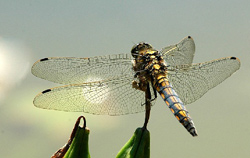
Large insects, like this Four-spot skimmer, are ideal targets for the lens.
Click on each comparision photo below to view full size versions
Below is our lens test data. To find out how to use these graphs look at this article: How we test lenses
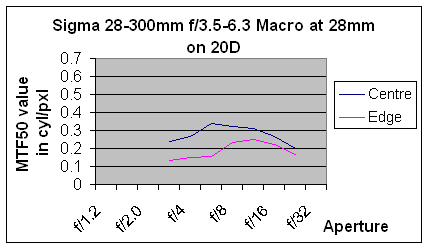
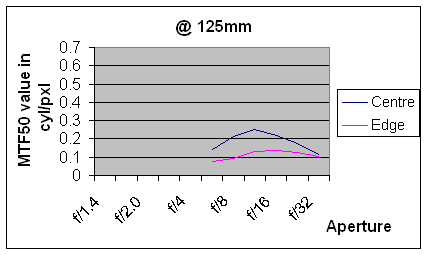
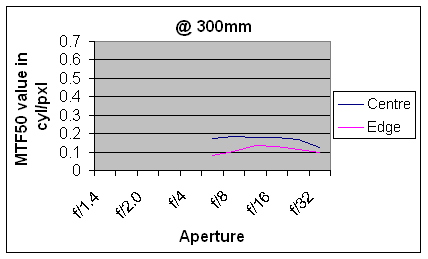
Verdict
If you need a general purpose lens to carry on your camera, and don’t use the long end that often but would like to have the option there without changing lenses, this could well be the item you are after. Good performance through the shorter half of its range is only slightly let down at the long end, and with a closest focus distance of only half a metre throughout, it becomes even more versatile.
In summary, the positive points of the 28-300mm f/3.5-6.3 DG Macro are:
![]() Huge focal range
Huge focal range
![]() Compact and lightweight to carry
Compact and lightweight to carry
![]() Good performance through the short end
Good performance through the short end
![]() Good value for money
Good value for money
The negative points are:
![]() Chromatic abberations around the edges at the longer lengths
Chromatic abberations around the edges at the longer lengths
![]() Softens a tad at the longer settings
Softens a tad at the longer settings
Check the latest price of the Sigma 28-300mm f/3.5-6.3 DG Macro here
Discuss this lens and other related lens subjects here
Test by Ian Andrews www.wildaboutkent.com
Add your message
Please login here or if you've not registered, you can register here. Registering is safe, quick and free.
photodo Stats
428 MTF tests
74 in-depth photodo reviews
100+ users join each day
Help the lens community by reviewing or rating a lens today via our lens search
Latest Lens Reviews
- Chinon 28mm f/2.8 Vintage Lens Review
- Canon EF 70-200mm f/4L IS II USM Lens Review
- Samyang AF 85mm f/1.4 EF Review
- Sigma 70mm f/2.8 DG Macro Art Review
- Samyang AF 24mm f/2.8 FE Review
- Meike 50mm f/1.7 Review
- Tamron 70-210mm f/4 Di VC USD Review
- Lensbaby Burnside 35mm f/2.8 Review
- Asahi Super Takumar 50mm f/1.4 Review
- Asahi Super-Multi-Coated Takumar 135mm f/3.5 Review



